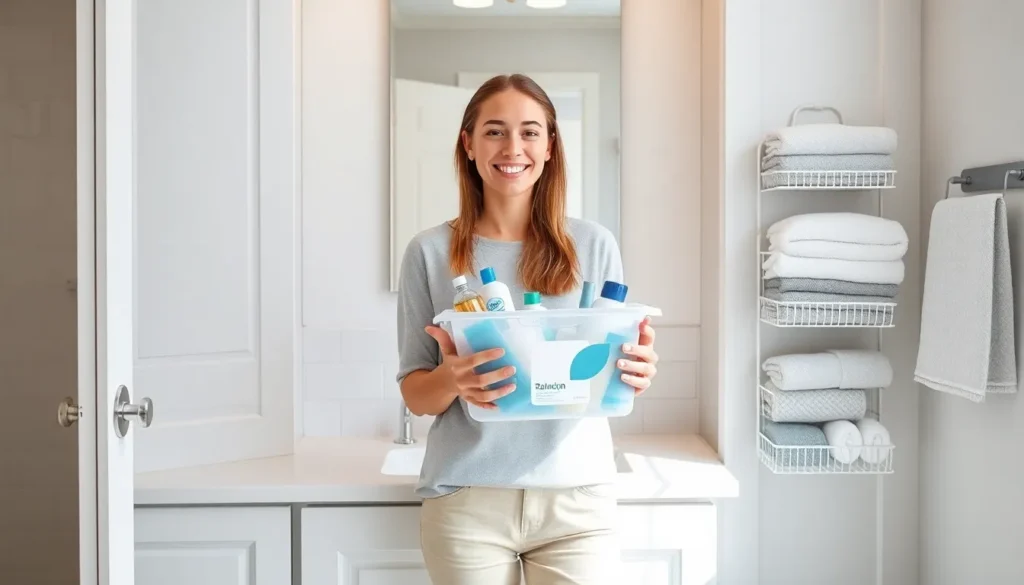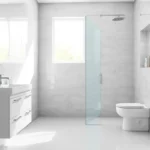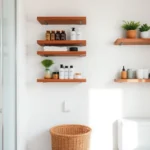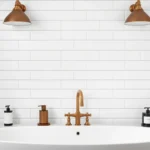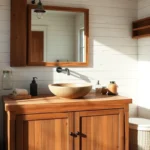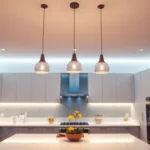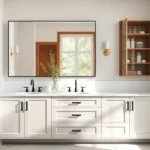We’ve all been there – opening the cabinet under our bathroom sink only to face a chaotic mess of toiletries, cleaning supplies, and random items we forgot we owned. It’s frustrating when you’re rushing to get ready and can’t find that one product you desperately need.
The space beneath your bathroom sink holds incredible potential for smart storage answers. With the right organizational strategies, you can transform this cluttered area into a functional and accessible storage powerhouse that makes your daily routine smoother and more efficient.
Whether you’re dealing with awkward plumbing pipes, limited vertical space, or simply too much stuff crammed into too small an area, we’ve got practical answers that’ll revolutionize your under-sink storage. These proven organization ideas will help you maximize every inch of space while keeping your essentials easily accessible and beautifully arranged.
Clear Out and Assess Your Current Under Sink Space
We start by removing everything from under your bathroom sink to create a blank canvas for organization. Pull out cleaning supplies, toiletries, towels, and any other items you’ve accumulated in this space over time. Place these items on your bathroom counter or floor where you can easily sort through them.
Sort items into three distinct categories as you empty the space:
- Keep: Products you use regularly like daily toiletries, frequently needed cleaning supplies, and essential items
- Relocate: Items that belong in other areas such as extra linens, seasonal products, or rarely used medications
- Discard: Expired products, empty containers, duplicates, and items you no longer need
Measure your under sink dimensions to understand the space you’re working with. Record the height, width, and depth of the cabinet, noting any obstructions like pipes or shut-off valves. These measurements will guide your storage solution choices and help you maximize every available inch.
Clean the cabinet thoroughly before organizing begins. Wipe down all surfaces with a disinfectant cleaner, paying special attention to corners where grime tends to accumulate. Check for any water damage, loose shelving, or areas that need repair before adding your organizational systems.
Assess your plumbing configuration to determine the best storage approach. Note where pipes run through the space and identify areas where you can install shelving or drawers. Most under sink cabinets have a center divider or pipes that create natural storage zones you can work around effectively.
Document problem areas you’ve noticed during this assessment phase. Common issues include water stains indicating leaks, inadequate lighting making items hard to find, or awkward pipe placement limiting storage options. Addressing these concerns now will prevent future organizational challenges and ensure your system works long term.
Install Pull-Out Drawers for Easy Access
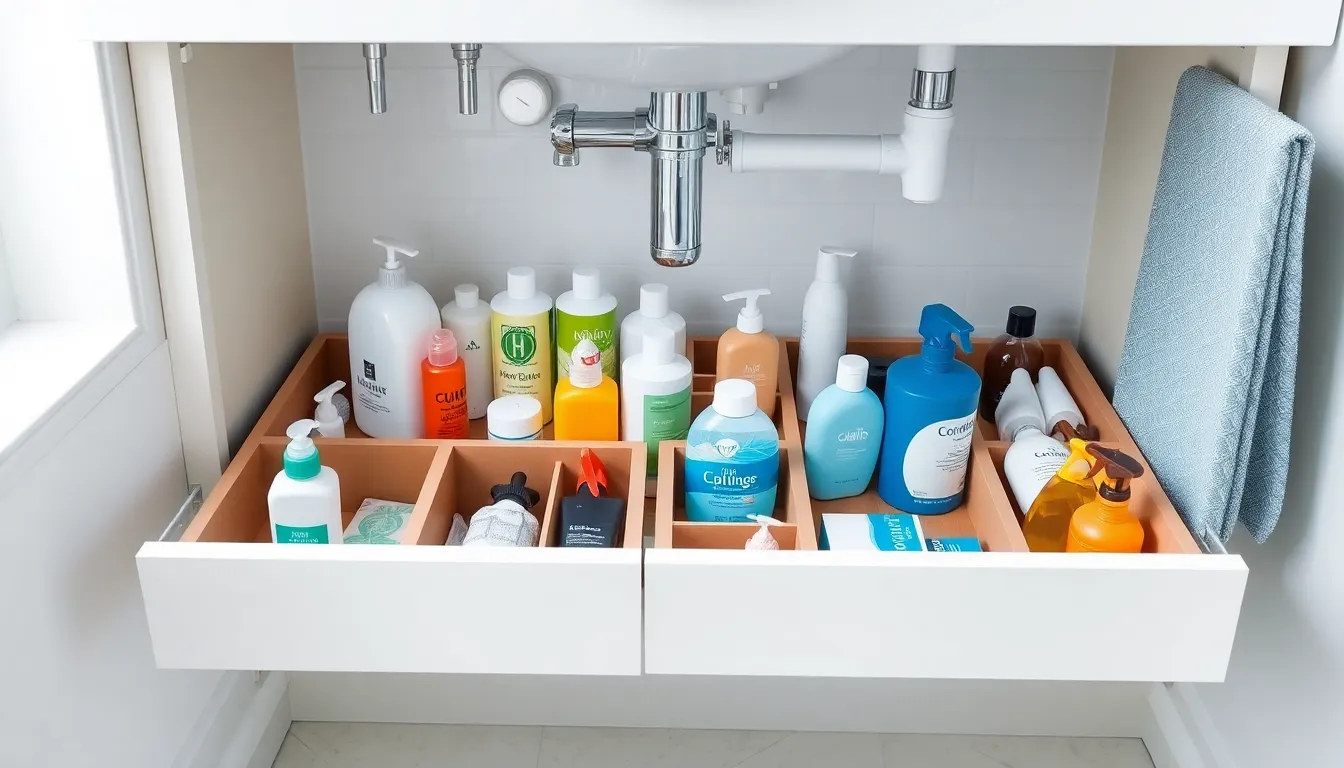
Pull-out drawers transform your under-sink storage from a frustrating reach-and-search situation into an organized, accessible system. These sliding answers bring every item within easy reach, eliminating the need to crawl into cramped spaces or fumble around plumbing pipes.
Choose Adjustable Drawer Systems
Adjustable drawer systems give us the flexibility to customize storage based on our exact bathroom needs and unique cabinet dimensions. We can configure these systems with multiple compartments and dividers to efficiently sort hair care products, cosmetics, and cleaning materials into designated spaces.
The adjustable heights and widths accommodate everything from tall shampoo bottles to bulky cleaning supplies while maximizing our limited under-sink real estate. Modular components allow us to create the perfect fit around existing plumbing fixtures, ensuring we don’t waste any usable space.
These systems typically include removable dividers that we can reposition as our storage needs change over time. We’ll find that the compartmentalized design keeps similar items grouped together, making it easier to locate what we need quickly during busy morning routines.
Measure Around Plumbing Fixtures
Accurate measurements are essential before investing in any pull-out drawer system for our under-sink space. We need to measure both height and width dimensions while carefully noting the location of pipes, drains, and shut-off valves that could interfere with drawer installation.
Many pull-out organizers are specifically designed to work around common plumbing configurations, featuring cutouts or adjustable sections that accommodate these fixtures. We should measure the clearance space around pipes to ensure our chosen drawer system will slide smoothly without catching on obstructions.
Taking photos of our plumbing layout alongside measurements helps us visualize how different drawer configurations will fit in the space. We can then select systems with the right combination of full-width drawers and narrower sections that navigate around our exact plumbing setup.
The goal is finding drawers that maximize every inch of available space while maintaining full functionality around existing fixtures.
Add Stackable Storage Bins for Vertical Organization
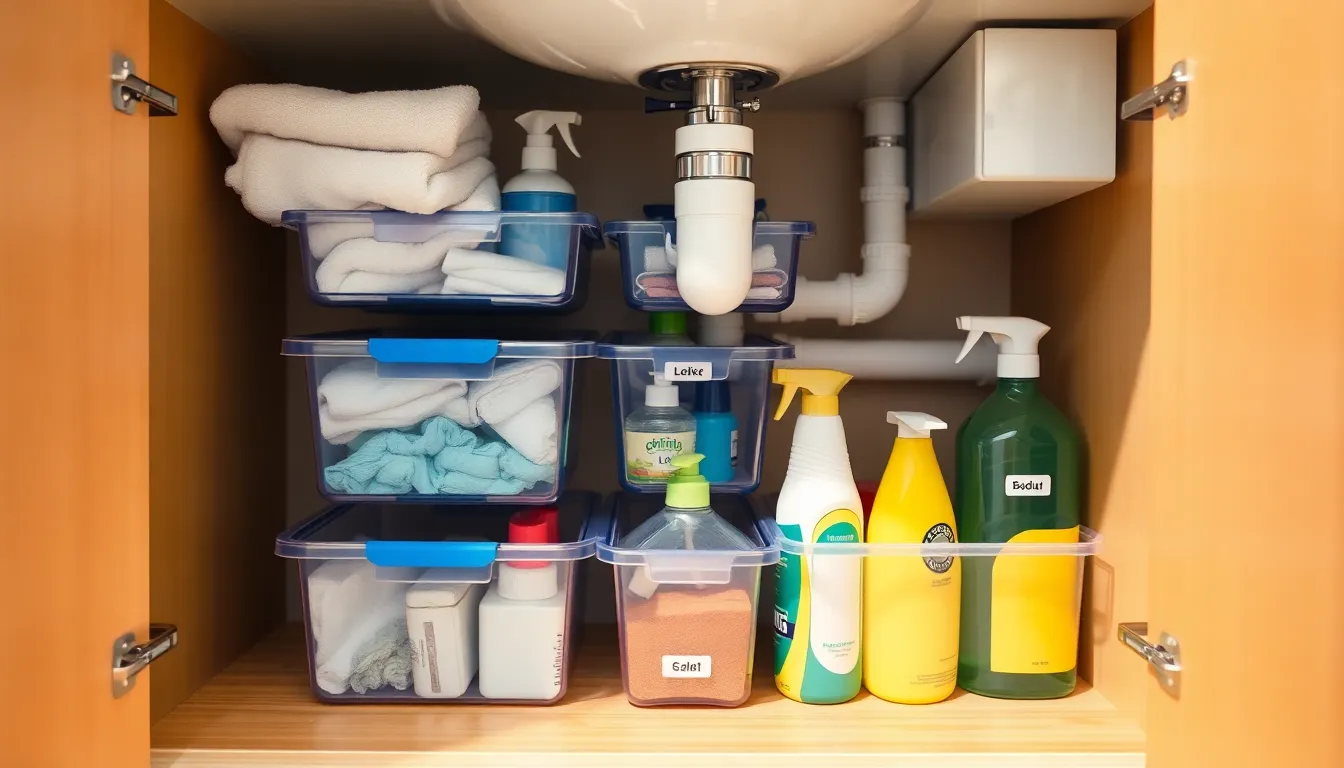
Stackable storage bins create multiple layers of organization within our under-sink space, maximizing vertical storage potential rather than allowing items to pile up horizontally. We can arrange cleaning supplies, toiletries, and extra bathroom essentials in these bins to transform chaotic clutter into an efficient system.
Use Clear Containers for Visibility
Clear containers allow us to identify contents instantly without opening or moving multiple bins throughout our daily routines. We eliminate the frustration of searching through opaque storage by choosing transparent options that showcase what’s inside each container.
Modular drawer systems work exceptionally well in under-sink areas because they can be customized to fit around pipes and irregular cabinet spaces. Open-topped clear bins provide easy access while maintaining visibility of our stored items like hair products, skincare essentials, and cleaning bottles.
We reduce duplicate purchases when we can see exactly what supplies we already have in storage. Clear containers prevent us from buying items we forgot we owned, saving both money and cabinet space in our bathroom organization system.
Label Each Bin for Quick Identification
Labels streamline our daily routines by helping us locate exact items instantly, especially in multi-user bathrooms where different family members need quick access. We can apply labels to both clear and opaque containers to distinguish between similar-looking products like different types of cleaners or personal care items.
Combining labels with pull-out organizers enhances our access and space utilization around plumbing obstacles. Movable dividers work alongside our labeling system to create designated zones for categories like “Daily Essentials,” “Cleaning Supplies,” and “Backup Stock.”
We maintain organization long-term when each bin has a clear purpose identified through proper labeling. Our bathroom storage stays functional and tidy because every item has a designated home that’s clearly marked and easy to remember.
Utilize Door-Mounted Storage Solutions
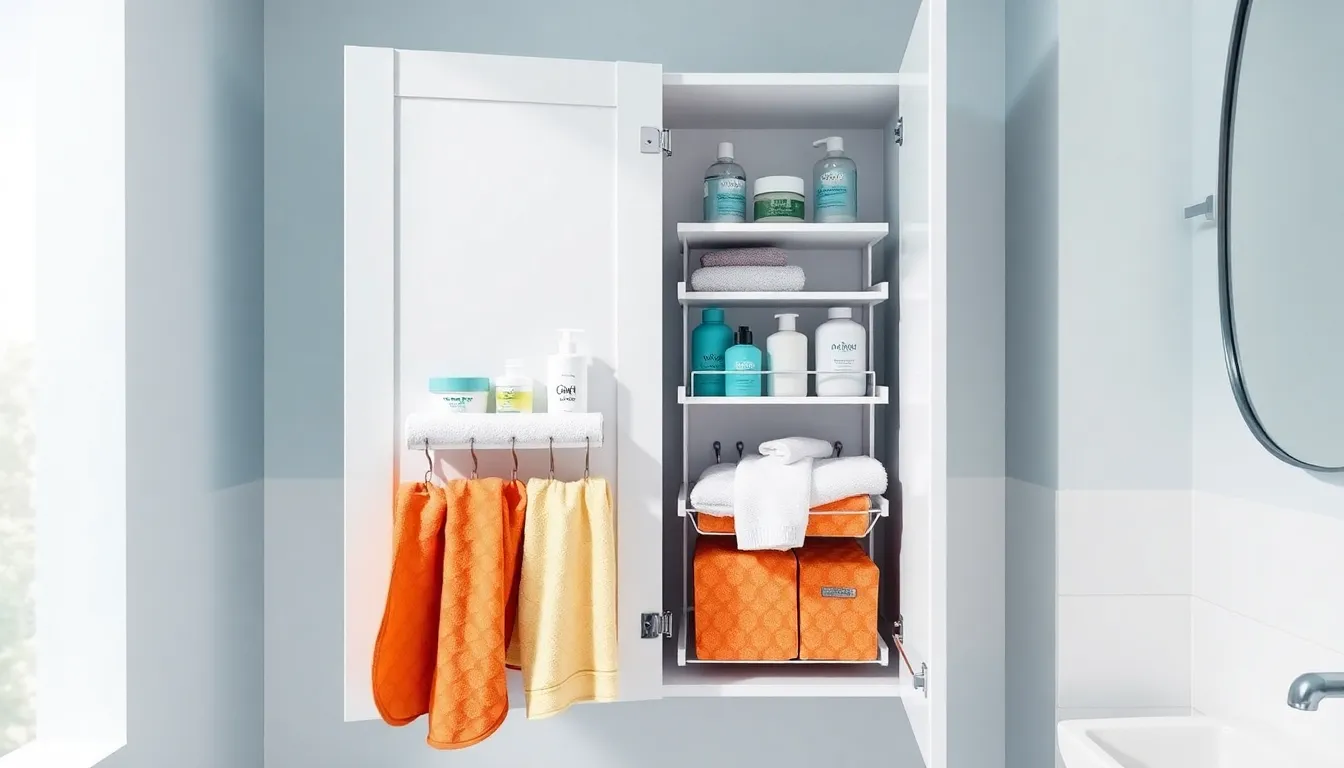
We can maximize our under-sink storage by taking advantage of the often-overlooked cabinet door space. This vertical real estate offers excellent opportunities for organizing smaller items while keeping them easily accessible.
Install Over-the-Door Organizers
Over-the-door organizers transform wasted cabinet door space into functional storage areas for towels, robes, and extra toiletries. We recommend choosing organizers with multiple tiers to accommodate different sized items and maximize vertical space usage.
Measuring the cabinet door’s width and height ensures we select organizers that fit properly without interfering with the door’s closing mechanism. Many over-the-door systems include adjustable shelves that we can customize based on our exact storage needs.
Installing these organizers requires no tools or permanent modifications to our cabinets. We simply hook them over the door and adjust the positioning for optimal weight distribution and stability.
Consider organizers with mesh pockets for better ventilation of stored items like washcloths and towels. Clear plastic compartments work well for toiletries since we can quickly identify contents without opening multiple sections.
Add Adhesive Hooks for Small Items
Adhesive hooks provide instant hanging answers for loofahs, washcloths, and hair accessories without damaging cabinet surfaces. We can strategically place these hooks on the inside of cabinet doors to create designated spots for frequently used small items.
Choosing hooks with strong adhesive backing ensures they’ll support the weight of wet items like washcloths and bath sponges. Command strips and similar removable adhesive products work particularly well since they won’t leave residue when we need to relocate them.
Multiple small hooks create more organizational flexibility than fewer large ones. We can dedicate exact hooks for different family members or item categories, making it easier to maintain our organizational system.
Position hooks at varying heights to accommodate different item sizes and user preferences. Lower hooks work well for children’s bath accessories, while higher placement keeps adult items within easy reach but out of the way.
Create Zones with Adjustable Shelving
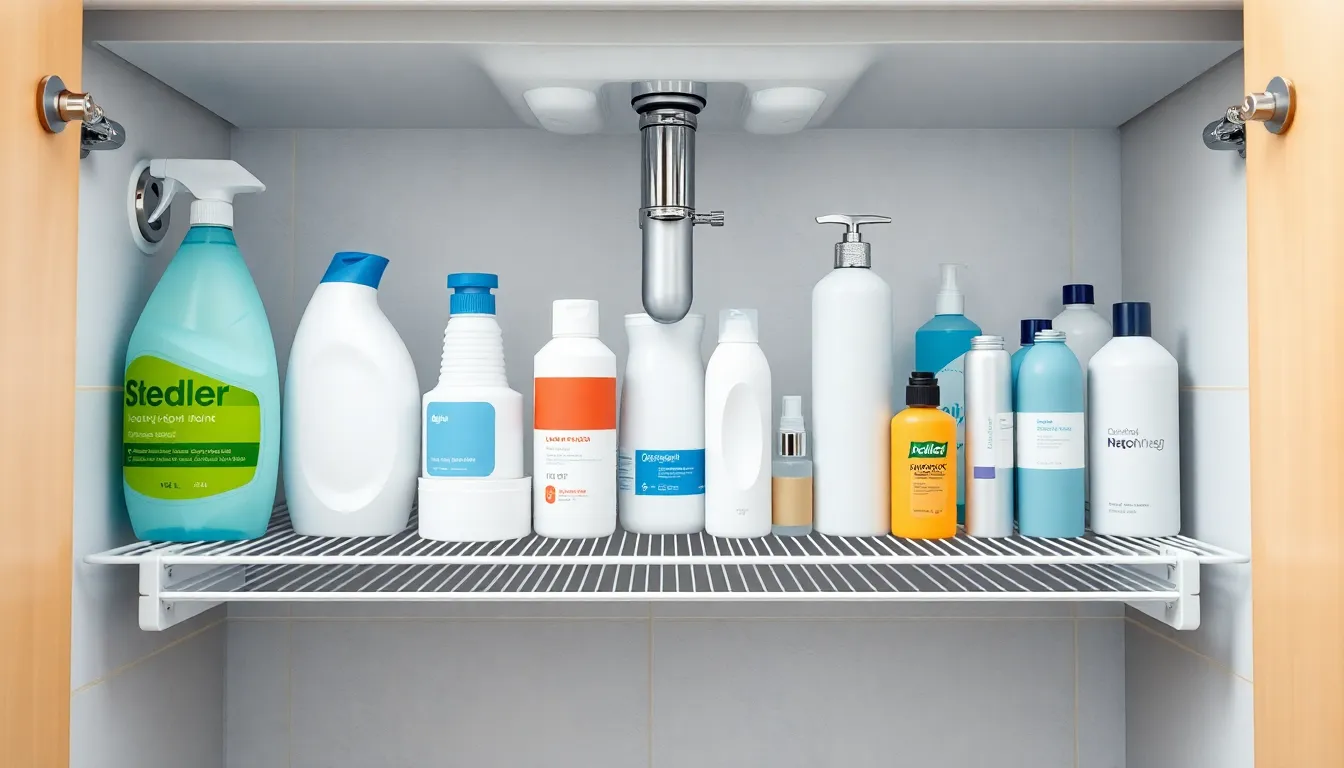
Building on our foundation of pull-out systems and stackable answers, we can take organization a step further by creating dedicated zones within our under-sink space.
Group Similar Items Together
Categorize products by their function to create logical storage zones that make daily routines more efficient. We recommend grouping cleaning supplies like toilet bowl cleaners and surface sprays in one area, while hair products such as shampoos and conditioners occupy another designated section.
Separate toiletries into their own zone to prevent cross-contamination with harsh cleaning chemicals. Items like toothpaste, razors, and skincare products deserve their own dedicated space where they’ll stay organized and easily accessible.
Label each zone clearly to maintain our organization system over time. Studies show that labeled storage areas are 3 times more likely to stay organized compared to unlabeled spaces, making this step crucial for long-term success.
Position frequently used items at eye level within each zone to reduce bending and searching. We’ve found that placing daily essentials in the most accessible spots saves valuable time during busy morning routines.
Use Expandable Shelf Organizers
Install expandable shelves that adjust to accommodate our exact storage needs and plumbing configurations. These versatile units can expand from 12 inches to 24 inches wide, allowing us to maximize space around pipes and fixtures.
Adjust shelf heights to fit different product sizes within each zone. We can create taller sections for bottle-shaped cleaning supplies and shorter areas for flat items like sponges and washcloths.
Incorporate movable dividers within expandable shelves to create mini-zones for better organization. These dividers help prevent items from sliding around and maintain separation between different product categories.
Choose units with non-slip surfaces to keep items secure during daily use. We’ve discovered that textured shelf surfaces reduce movement by up to 80% compared to smooth surfaces, ensuring our organized zones stay intact.
Maximize Corner Space with Lazy Susans
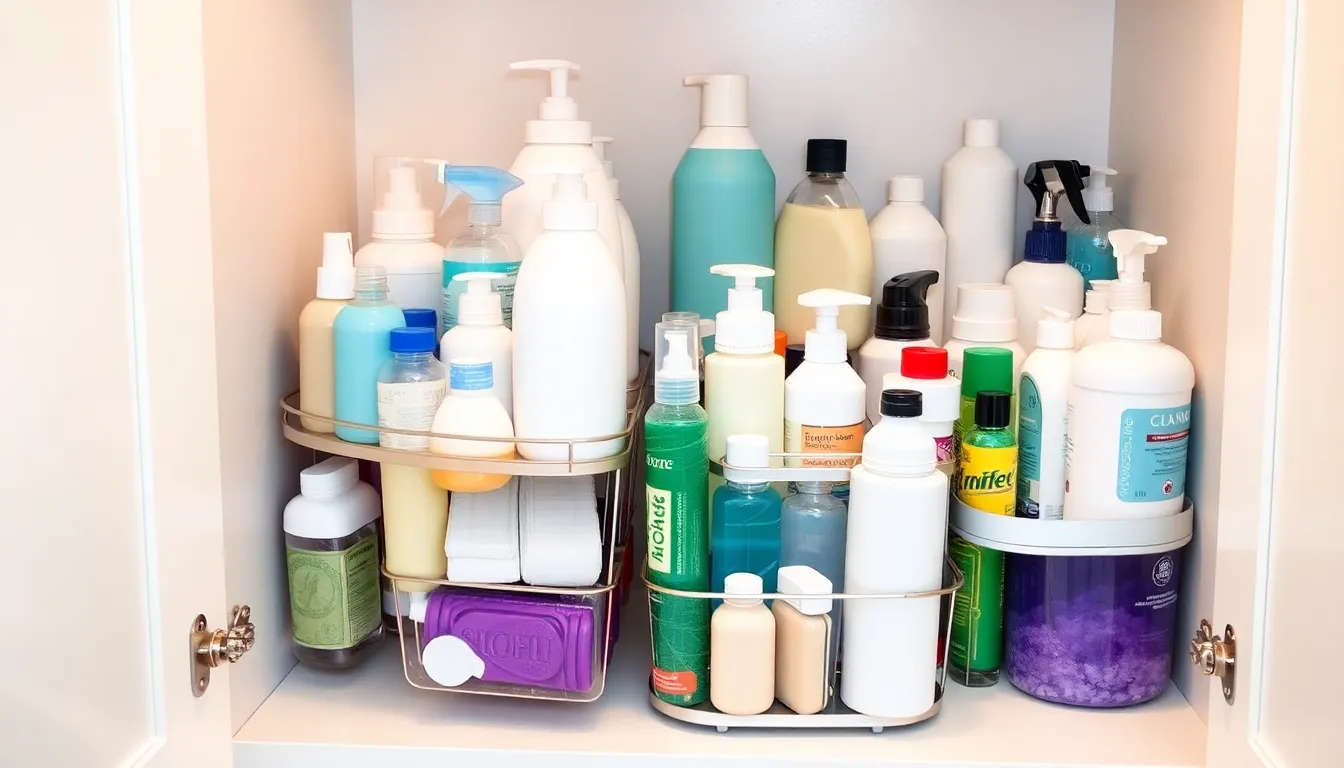
Lazy Susans revolutionize corner cabinet storage by bringing hard-to-reach items to your fingertips with a simple spin. These rotating trays fit perfectly into awkward corner spaces where pipes and irregular cabinet shapes typically create dead zones.
Choose Multi-Tier Rotating Organizers
Multi-tier rotating organizers transform vertical space into organized storage levels that keep similar items grouped together. We recommend these turntable systems because they prevent overcrowding while maximizing every inch of available height around plumbing fixtures.
Wire basket models work exceptionally well for ventilation-sensitive items like cleaning supplies and hair products. Molded plastic versions offer smooth surfaces that are easy to clean and perfect for skincare products and toiletries.
Standard cabinets accommodate most multi-tier organizers, while deep cabinets benefit from larger rotating systems that can hold more items per level. Toiletries stay organized on the top tier, first aid supplies occupy the middle section, and cleaning products fit securely on the bottom level.
Similar items group naturally when you assign each tier a exact category, making it simple to locate what you need during busy morning routines. This approach eliminates the frustration of digging through cluttered corners where items often get forgotten or expire unnoticed.
Store Tall Bottles and Containers
Tall bottles require strategic vertical answers that work around plumbing obstructions while keeping containers upright and accessible. Stackable shelves create elevated platforms that lift shampoo and conditioner bottles above pipe configurations.
Shelf risers provide the perfect height adjustment for large containers, ensuring they don’t interfere with existing plumbing. Vertical storage bins keep tall items contained while preventing them from toppling over during daily use.
Pull-out organizers extend fully to reveal every tall bottle, making it easy to grab what you need without moving other items. Deep bins accommodate oversized cleaning supplies while modular drawer systems can be customized to fit your exact bottle collection.
Adjustable organizers adapt to irregular cabinet shapes, ensuring that even the tallest containers have a designated spot. This prevents the common problem of bottles falling over and creating chaos every time you open the cabinet door.
Install Under-Cabinet Lighting for Better Visibility

Dark under-sink cabinets make it nearly impossible to locate items quickly. Proper lighting transforms this space into a functional storage area where we can easily identify products and maintain our organizational systems.
Add Battery-Operated LED Strips
Battery-operated LED strips offer the simplest solution for illuminating under-sink spaces without requiring electrical work. Installation takes just minutes using the included adhesive backing, and we can position these strips exactly where light is needed most. These strips provide consistent, bright illumination that makes identifying cleaning supplies and toiletries effortless.
Most battery-operated LED strips last 3-6 months on a single set of batteries, making them cost-effective for long-term use. We can choose from various lengths to fit our exact cabinet dimensions, and many models offer adjustable brightness settings to prevent harsh glare. The wireless design means we won’t deal with cords or worry about water damage near plumbing fixtures.
Consider Motion-Sensor Options
Motion-sensor lighting eliminates the need to fumble for switches in dark cabinet spaces. These sensors automatically activate when we open cabinet doors, providing instant illumination exactly when we need it. The hands-free operation proves especially valuable when our hands are full with toiletries or cleaning supplies.
Battery-powered motion sensors typically offer 30-60 second auto-shutoff features to preserve battery life while ensuring adequate time to locate items. We can adjust the sensitivity settings on most models to prevent false triggers from vibrations or nearby movement. Installation requires no wiring, and the sensors work reliably in humid bathroom environments where traditional lighting might fail.
Use Tension Rods for Hanging Storage
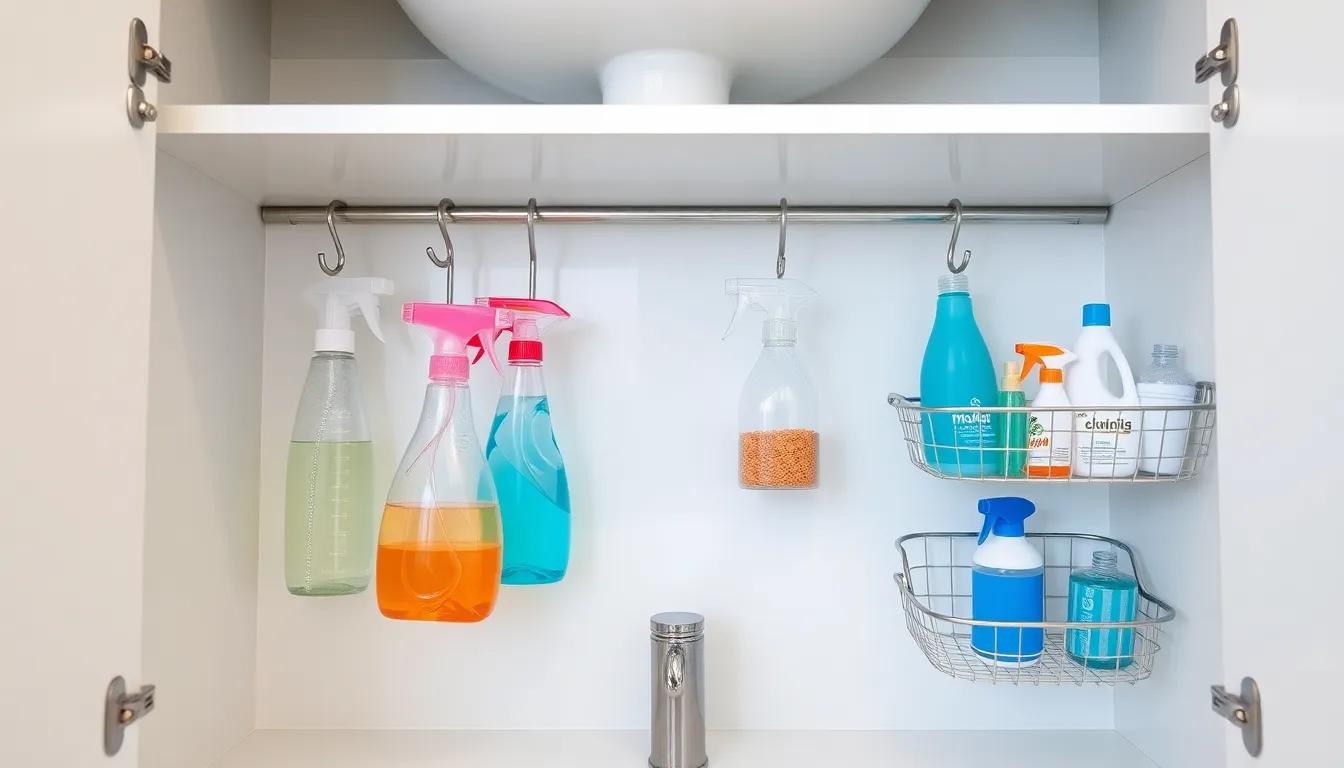
We can transform dead space under our bathroom sink by installing tension rods horizontally between cabinet walls. These adjustable rods create instant hanging storage above plumbing pipes without requiring any permanent installation or tools.
Hang Spray Bottles and Cleaning Supplies
Install rods at optimal heights to accommodate spray bottles of various sizes while maintaining easy access. Position the first tension rod about 6-8 inches from the cabinet floor to clear most plumbing configurations. Add a second rod higher up to double our hanging capacity for lighter items like rubber gloves or small cleaning cloths.
Group cleaning supplies by frequency of use when hanging them from the tension rod system. Place daily cleaning products like bathroom spray and glass cleaner on the lower, more accessible rod. Store specialty cleaners and less frequently used supplies on the upper rod to keep them organized but out of the way.
Use S-hooks and spray bottle holders to maximize the hanging potential of each tension rod. These accessories prevent bottles from sliding along the rod and create designated spots for exact items. Choose plastic or coated metal hooks to prevent scratching on spray bottle handles and cabinet surfaces.
Create Additional Vertical Space
Stack multiple tension rods at different heights to create a layered hanging system that works around existing plumbing. Install rods at 6-inch intervals to accommodate various item sizes while ensuring we can still access everything easily. This approach typically allows for 2-3 hanging levels in most standard bathroom cabinets.
Combine tension rods with hanging baskets to create additional storage compartments within our vertical system. Wire or mesh baskets can hang directly from the rods using hooks or carabiners, providing contained storage for smaller items like sponges, scrub brushes, or travel-sized toiletries.
Position rods to work with other organizers by leaving space between hanging storage and floor-based answers like stackable bins or pull-out drawers. Mount tension rods in the upper portion of the cabinet space, typically in the top two-thirds of the available height, to maintain compatibility with our existing organization systems.
Implement Drawer Dividers for Small Items
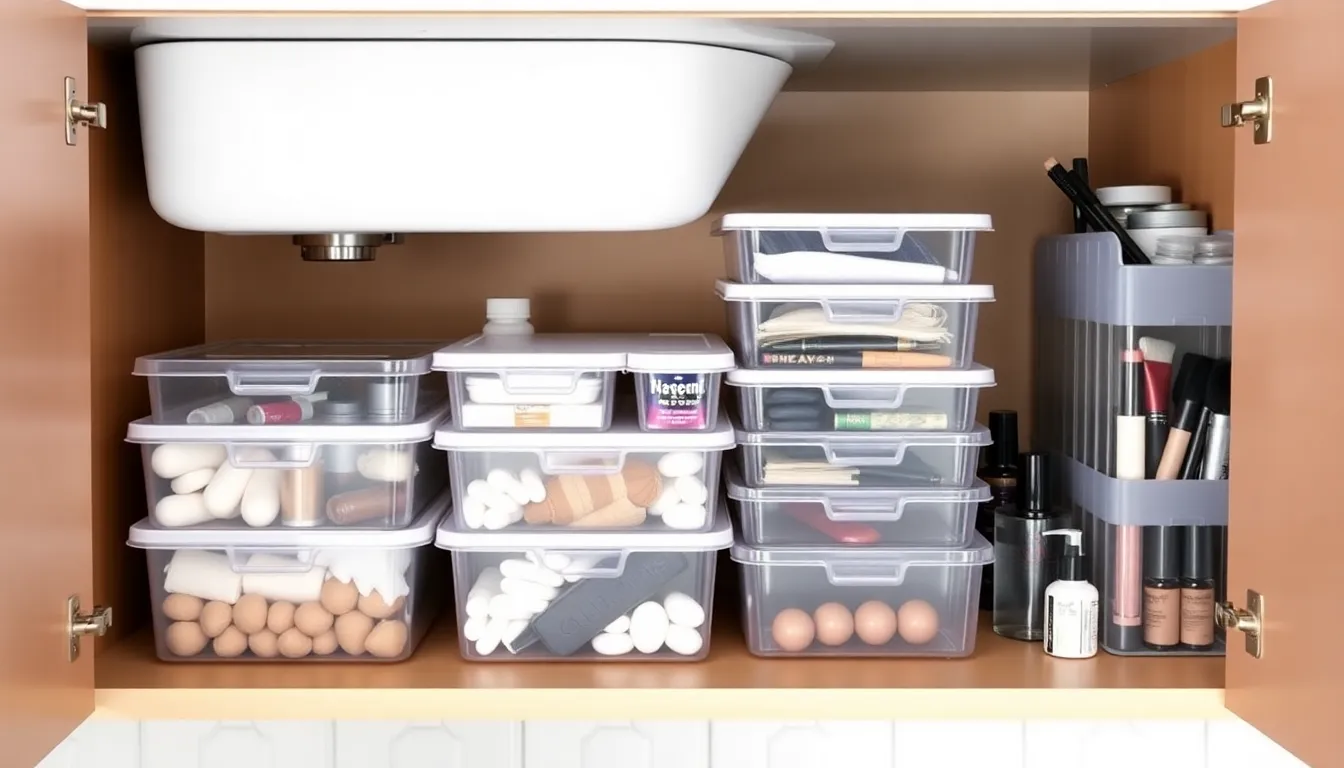
Small bathroom items quickly become chaotic without proper organization systems in place. We’ll show you how drawer dividers transform cluttered under-sink storage into efficiently categorized spaces where every item has its designated home.
Organize Hair Accessories and Makeup
Stackable bins create the perfect solution for organizing hair accessories and makeup products in under-sink drawers. We recommend using open-topped containers that allow quick visual access to frequently used items like hair ties, bobby pins, and daily cosmetics. This approach prevents the common problem of rummaging through tangled accessories during busy morning routines.
Pull-out trays work exceptionally well for makeup organization since they bring items from the back of deep cabinets directly to your fingertips. Assign each type of cosmetic to its own labeled container within these trays for instant identification. Hair brushes, curling irons, and styling tools benefit from dedicated compartments that prevent damage and tangling.
Modular dividers offer the flexibility to customize compartments as your collection grows or changes. We suggest adjusting these dividers seasonally to accommodate different makeup palettes or hair accessories. Clear containers work best for this category since visibility eliminates guesswork and reduces duplicate purchases.
Separate Medications and First Aid Supplies
Clear, lidded bins provide the safest storage solution for medications and first aid supplies, keeping them separate from other bathroom products. We recommend using dedicated drawers or containers that can be labeled and sealed securely to prevent contamination. This separation reduces risks and ensures easy access during emergencies when every second counts.
Childproof storage options become essential when medications are stored in accessible under-sink areas. Position these containers on higher shelves or in locked compartments to prevent accidental access by children. First aid supplies like bandages, antiseptic wipes, and thermometers should be grouped together in clearly marked containers for quick emergency response.
Temperature-controlled areas work best for medication storage, making under-sink cabinets ideal since they’re typically cooler than medicine cabinets above sinks. We suggest checking expiration dates regularly and using clear containers to monitor medication supplies at a peek. Keep emergency contact numbers and medication lists visible inside these storage areas for quick reference during medical situations.
Add a Sliding Basket System
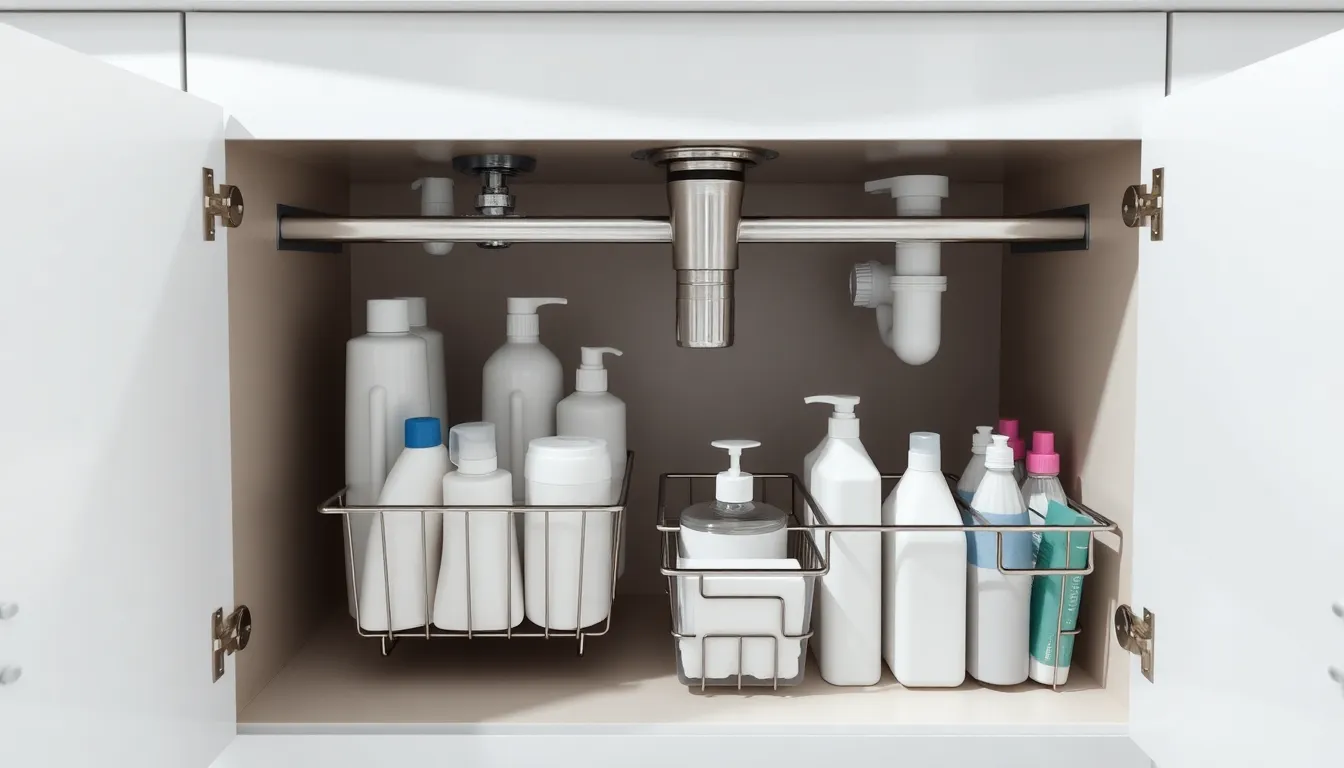
Sliding basket systems transform under-sink storage by providing smooth access to items stored deep within cabinets. These modular organizers solve the common problem of having to remove multiple items just to reach something at the back.
Install Track-Mounted Baskets
Track-mounted baskets revolutionize bathroom under-sink organization by sliding smoothly on rails for effortless access. We recommend these systems for their ability to work around awkward plumbing layouts and limited clearance areas that make traditional storage challenging.
Rails position precisely to avoid obstacles like pipes and existing cabinet drawers while maximizing every available inch. Systems mount securely to cabinet floors or walls, creating stable platforms that won’t shift when loaded with toiletries and cleaning supplies.
Modular sizing allows us to customize configurations based on exact cabinet dimensions and plumbing arrangements. Baskets come in various depths and widths, ensuring we can find the perfect fit for narrow spaces or deep cabinets.
Professional installation takes just a few hours and requires basic tools like a drill and level. Tracks adjust to accommodate irregular cabinet shapes, making them ideal for older bathrooms with non-standard plumbing configurations.
Keep Frequently Used Items Accessible
Frequently used items deserve prime real estate in our sliding basket system for maximum convenience. We position daily essentials like toothpaste, soap, and face wash in the front compartments or top baskets where they’re immediately visible and reachable.
Open-top bins work perfectly for toiletries we grab multiple times per day, eliminating the frustration of lifting lids or removing containers. Modular drawers help us group similar items together while maintaining easy access to everything we need for morning and evening routines.
Strategic placement reduces clutter by giving every item a designated spot that makes sense for our daily habits. Items we use weekly, like cleaning supplies or backup toiletries, can occupy the deeper sections of sliding baskets without creating accessibility issues.
Clear containers let us see contents at a peek, preventing duplicate purchases and helping us track inventory levels. Labels on basket fronts ensure family members know exactly where items belong, maintaining organization long term.
Conclusion
Transform your under-sink chaos into an organized oasis with these proven strategies. We’ve shown you how proper planning decluttering and smart storage answers can maximize every inch of this valuable space.
Remember that successful bathroom organization isn’t about perfection—it’s about creating systems that work for your daily routine. Whether you choose pull-out drawers stackable bins or door-mounted organizers the key is consistency in maintaining your new setup.
Start with one or two answers that address your biggest pain points then gradually build your system. With the right approach your under-sink area will become a functional space that saves you time and reduces morning stress.
Frequently Asked Questions
How do I start organizing my under-sink bathroom cabinet?
Begin by completely clearing out the under-sink area to create a blank canvas. Sort all items into three categories: “Keep” for regularly used products, “Relocate” for items that belong elsewhere, and “Discard” for expired or unnecessary items. Measure your cabinet dimensions and clean the space thoroughly before implementing any organizational systems.
What are the best storage solutions for under-sink cabinets?
Pull-out drawers, stackable storage bins, and adjustable shelf organizers are excellent options. Pull-out drawers provide easy access to deep areas, while stackable bins create vertical organization. Clear containers offer visibility, and expandable shelves adjust to fit around plumbing fixtures while maximizing available space.
How can I use my cabinet doors for extra storage?
Install over-the-door organizers to store towels, toiletries, and cleaning supplies. Add adhesive hooks at varying heights for hanging small items like loofahs and washcloths. Measure your cabinet door first to ensure proper fit, and position hooks strategically to accommodate different users and item sizes.
What’s the best way to organize different types of bathroom items?
Create dedicated zones by grouping similar items together. Keep cleaning supplies separate from toiletries, and label each zone clearly. Position frequently used items at eye level to reduce bending and searching. Use expandable organizers with movable dividers to create designated spaces for different categories.
How do I access items stored in hard-to-reach corners?
Install Lazy Susans or rotating organizers that allow you to spin hard-to-reach items into view with ease. Multi-tier rotating systems utilize vertical space effectively while keeping similar items grouped together. This prevents overcrowding and makes corner storage much more functional and accessible.
Should I add lighting to my under-sink cabinet?
Yes, adding lighting significantly improves functionality in dark cabinets. Battery-operated LED strips are easy to install and cost-effective. Motion-sensor lighting provides hands-free operation, automatically activating when you open cabinet doors, making it much easier to locate items quickly during daily routines.
What’s the best way to store tall bottles and containers?
Use stackable shelves and vertical storage bins to keep tall items upright and accessible. Install pull-out organizers specifically designed for tall containers, ensuring even the tallest bottles have designated spots. This prevents chaos when opening cabinet doors and maintains organization over time.
How do sliding basket systems work for under-sink storage?
Sliding basket systems use track-mounted baskets that glide on rails, providing smooth access to items stored deep within cabinets. They accommodate awkward plumbing layouts while keeping frequently used items in prime positions. Use open-top bins and clear containers with labels for maximum convenience and organization.

